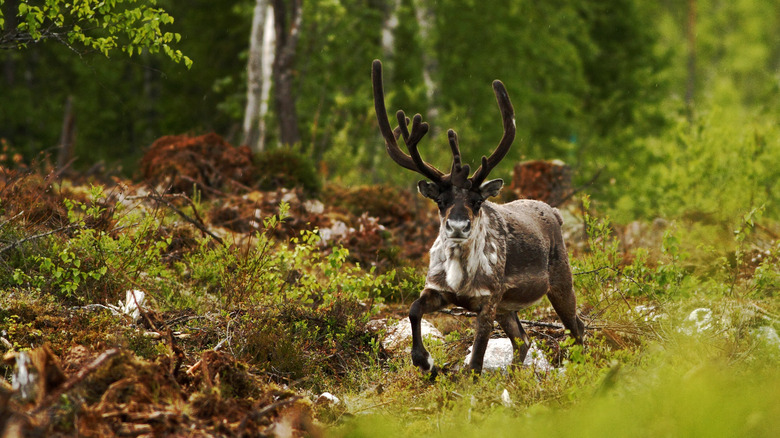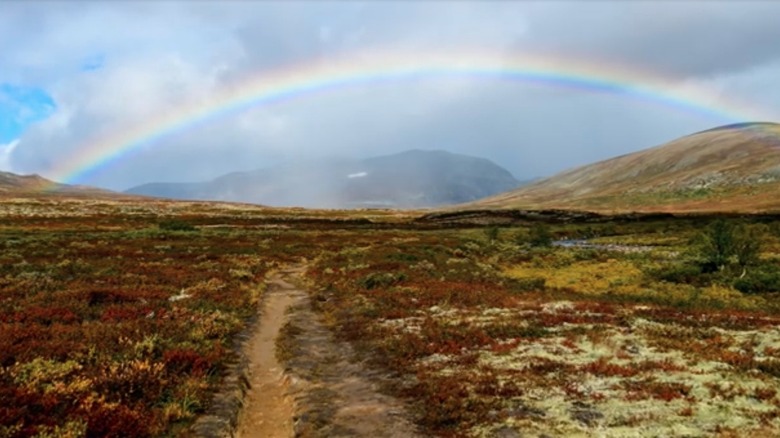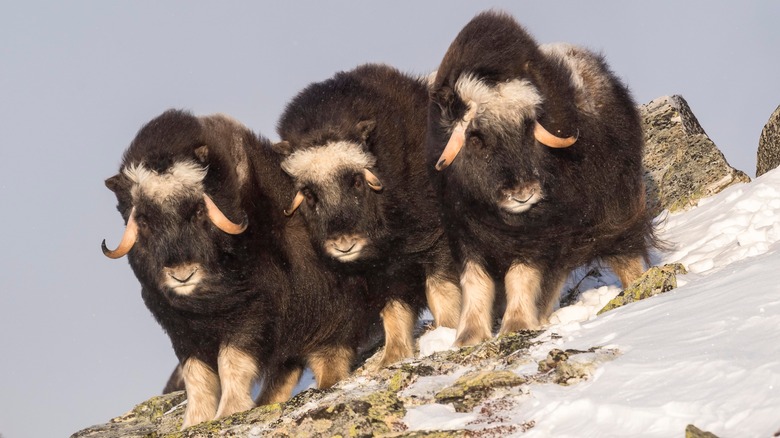The Breathtaking European National Park Where You'll Spot Real-Life Reindeer Roaming
Perhaps you've seen reindeer in a zoo, at a Christmas festival alongside Santa Claus, or in a stop-motion animation special about one with a red nose. What if you could see them while wandering around a beautiful national park? If you happen to visit Norway, you can. About four hours northwest of Oslo, and three hours southwest of Trondheim, you'll find the 654 square-mile Dovrefjell-Sunndalsfjella National Park. It covers parts of three counties: Møre og Romsdal, Innlandet, and Trøndelag, and features glorious snow-topped mountain ridges like Snøhella and Romsdalseggen.
There have been people living in the area since the Stone Age, with remnants of their lives being found from as far back as 8,800 years ago. There are traces of ancient reindeer hunting that are thousands of years old, and there is lots to see and do outdoors. You can hike, camp, cycle, and even hunt and fish (with a license, of course). Reindeer aren't the only animals you'll spy as you travel through the park. There are also musk oxen and Arctic foxes around, and you might even see a golden eagle flying overhead. Let's explore Dovrefjell-Sunndalsfjella National Park, learn about activities, and cover what you need to know before you go.
Animal spotting in Dovrefjell-Sunndalsfjella National Park
There is a legend about the area that says there was once a man who was raised by a troll, whose learning helped him unite the country. While you probably won't see any trolls, you are likely to see a reindeer. In fact, this is one of the few wild mountain reindeer habitats in Scandinavia, where these beautiful creatures eat lichen, grasses, and other plants native to the area. They've been hunted for thousands of years and have sustained the local population. (They are still hunted to control that population, but again, you must have a permit.) If you spy one of these shy animals, stay far away to avoid disturbing them. That's what your camera's zoom function is for.
You'll also likely see musk oxen, which went extinct in the park at the end of the last Ice Age but were reintroduced from Greenland in the early to mid-20th century. They're also best to admire from afar, but are a real sight to behold! Musk oxen aren't the only animal species that was reintroduced, either. The Arctic fox was declared extinct here in the 1990s, but captive-bred foxes were released a bit under 20 years ago.
That brings us to your dogs. You can bring them the entire year, though they must be on leashes from March 1 through August 20. That said, please keep them from disturbing the local wildlife all year long. Antlers and horns aren't good for them, and they aren't good for the calm of the other animals. It's worth keeping them close to preserve these beautiful residents for generations to come. If you want to apply for a dog sledding permit, you can do so here.
Hiking and rules in Dovrefjell-Sunnadalsfjella National Park
Hiking is the perfect activity in the park, and there are lots of trails. Some include the moderate Moskusstien trail, which is 5.3 miles each way, with an elevation gain of over 1,600 feet. Another moderate option is the Storhaugen loop, which is 5.3 miles total with about 2,930 feet of elevation gain. If you want a real challenge, try the Trollheimen Trail, which is 39.2 miles long and has a gain of about 1,000 feet. You can also summit the almost 1.5-mile-high Snøhetta mountain from the Norwegian Ramblers Association cabins of Snøheim and Reinheim.
Camping is permitted anywhere, though you shouldn't pitch your tent where animals graze. It's best to stay near touristed areas. No RVs and campers are allowed, and campfires are only permitted from mid-September to mid-April. While there, you can pick common flowers, berries, and wild mushrooms, but please, friends, only do that if you have the expertise. Pedal bikes are allowed on gravel roads from early June to mid-July, and e-bikes are always prohibited.
There are a few other rules for the astonishingly lovely park. First, don't build cairns (or small rock piles), as fun as that is, because the ones you see are to mark official trails. Drones are prohibited, and there is little cellphone coverage, so tell someone where you'll be and when you plan to return. Finally, there are ruins here that are thousands of years old, like pits for catching game as well as dwelling. Don't touch them or remove stones from any walls you see. Leave the history for the next generation.


